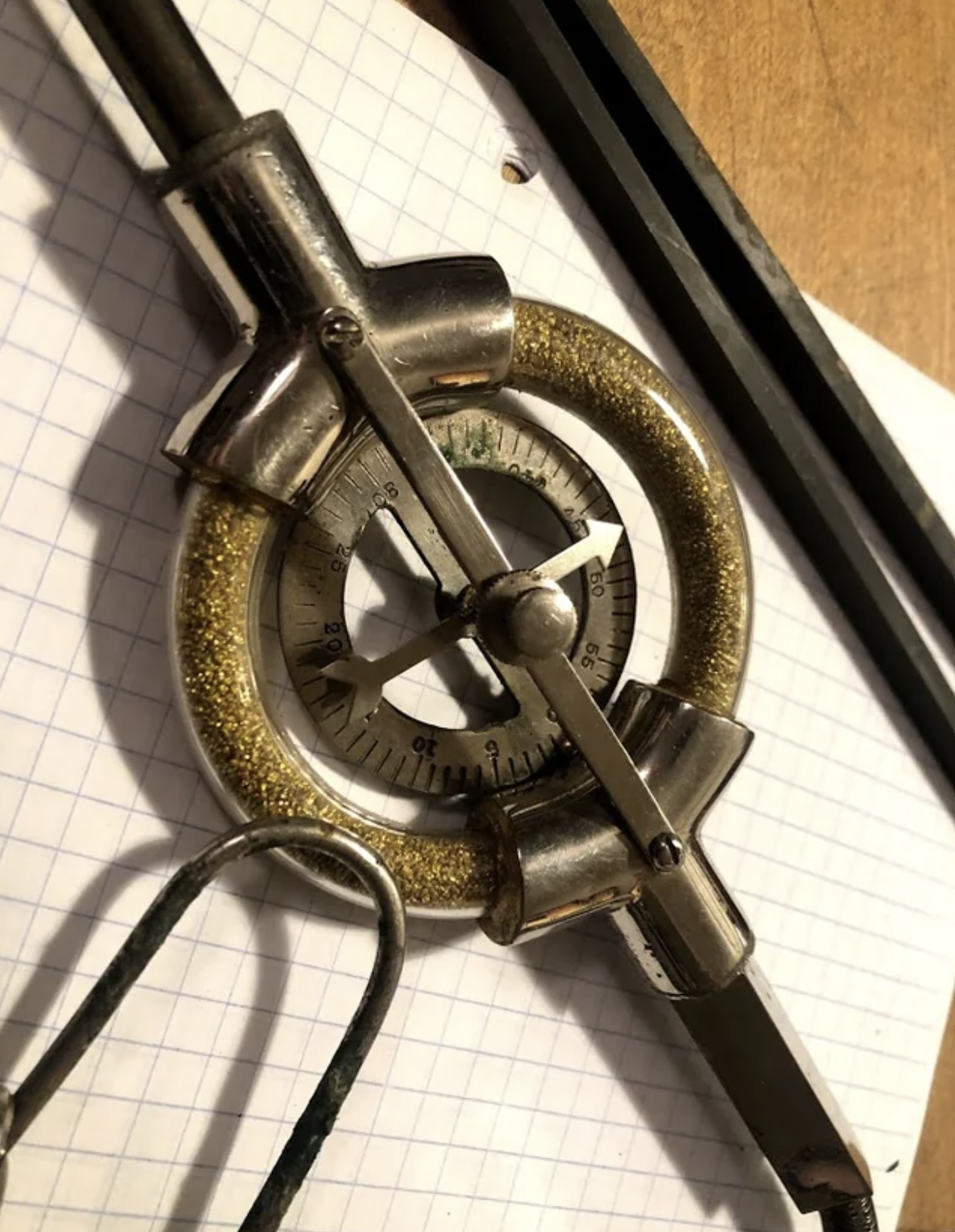A Forgotten Tool of the Good Old Days

Source: Worth Point
The Spanish dip needle may be buried in a drawer if you’re an antique lover. A clutter of old mining equipment might hide it. It has witnessed a time when prospectors navigated the landscape in search of riches using the magnetic forces of the Earth. Also known as miner’s compasses or forester’s compasses, the Spanish dip needle was instrumental for the exploration of minerals and geology. This was long before there were GPS, ground-penetrating radar, or other technological advancements for exploration.
What Is A Spanish Dip Needle?
The Spanish dip needle is a magnetic compass that measures the vertical angle of the Earth’s magnetic field, known as magnetic dip or inclination.
The Spanish dip needle has a magnetized needle that swings vertically, along with a circular housing. The housing will often have degree marks that offer information on the steepness of the needle’s dip, aiding in the location of magnetic materials. This is an indicator of where magnetic materials could be located within the layers of strata beneath the surface.
A steeply dipping needle usually signals a nearby deposit of iron, nickel, or another magnetic ore.

A Tool for Miners, Foresters, and Geologists
Miners and geological surveyors commonly used the Spanish dip needle from the late 18th century to the early 20th century. It was a fast way to determine where magnetic anomalies were in the landscape, making it a favored tool among them. Prospectors used it to help them locate promising ore bodies. Foresters and land surveyors also could apply the dip needle to locate sub-surface formations. These formations were important to their land use.
People call the instrument a dip needle because explorers first adopted it in Spain or Latin America. Eventually, it made its way into use across Europe and North America.
Uses – Practical and Scientific
The dip needle pointed to areas of drill or exploratory plans. While it couldn’t ensure ore was below, at least it could provide a physical measurement of some uncertainty about what was below the surface, thus proving the Spanish dip needle’s value. A scientist could use the dip needle for research in geomagnetism and to provide description of the nuances use of the Earth’s magnetic field to influence geology and earth science research.

Design Overview
Dip needles generally have the following:
- A metal or brass frame & circular housing.
- Clear damping fluid to reduce wobbling or wildness of the needle.
- A graduated scale to measure downward dip.
- A magnetized needle that spins/runs on a fine axial support.
- A locking mechanism or adjustable arms if calibration is needed.
They were generally made with sturdy materials combining precision with mechanical art. Now they await use in an antique collector’s display or in the minds of a history lover.
Lasting Influence
Spanish dip needles remind of a time when magnetism, skills, and observation led to exploration. Dip needles were simple instruments with starting educational value. They served field workers for importance of exploration for decades. Today the Spanish dip needle represents the period of early science and ingenuity. This period consumes our knowledge about the ground we stand on today.